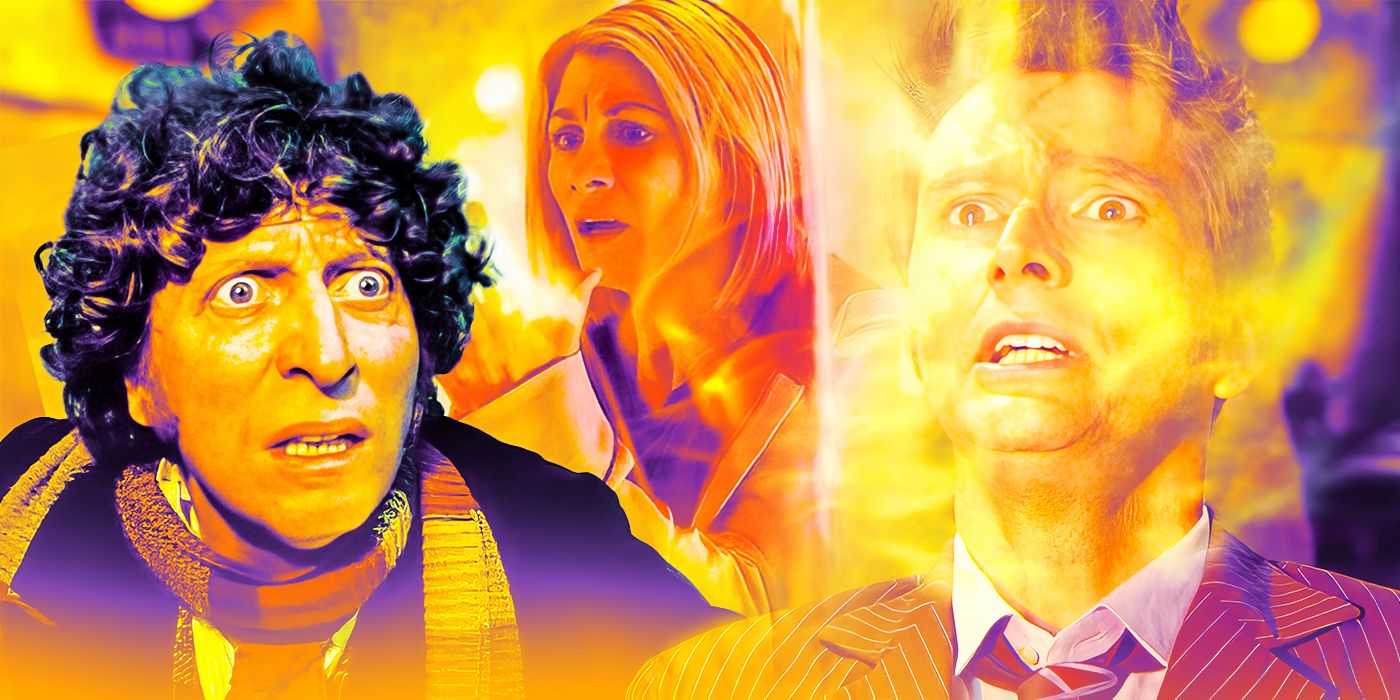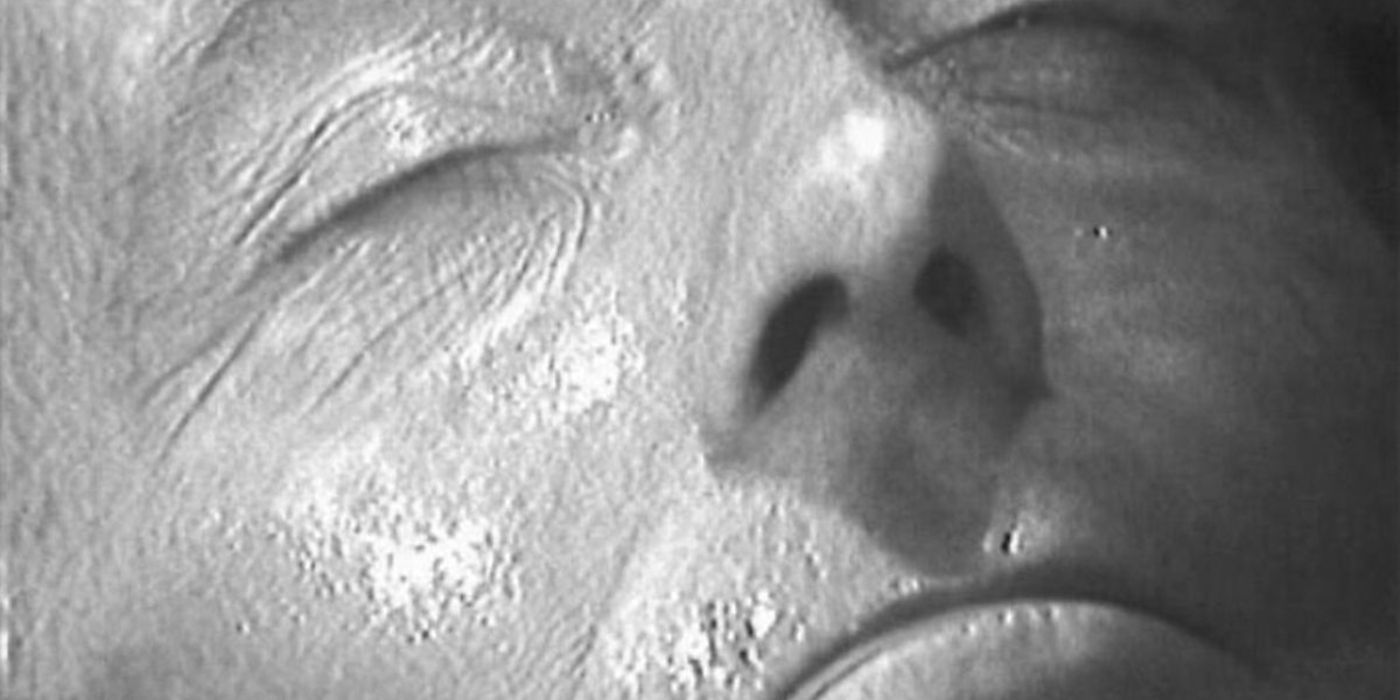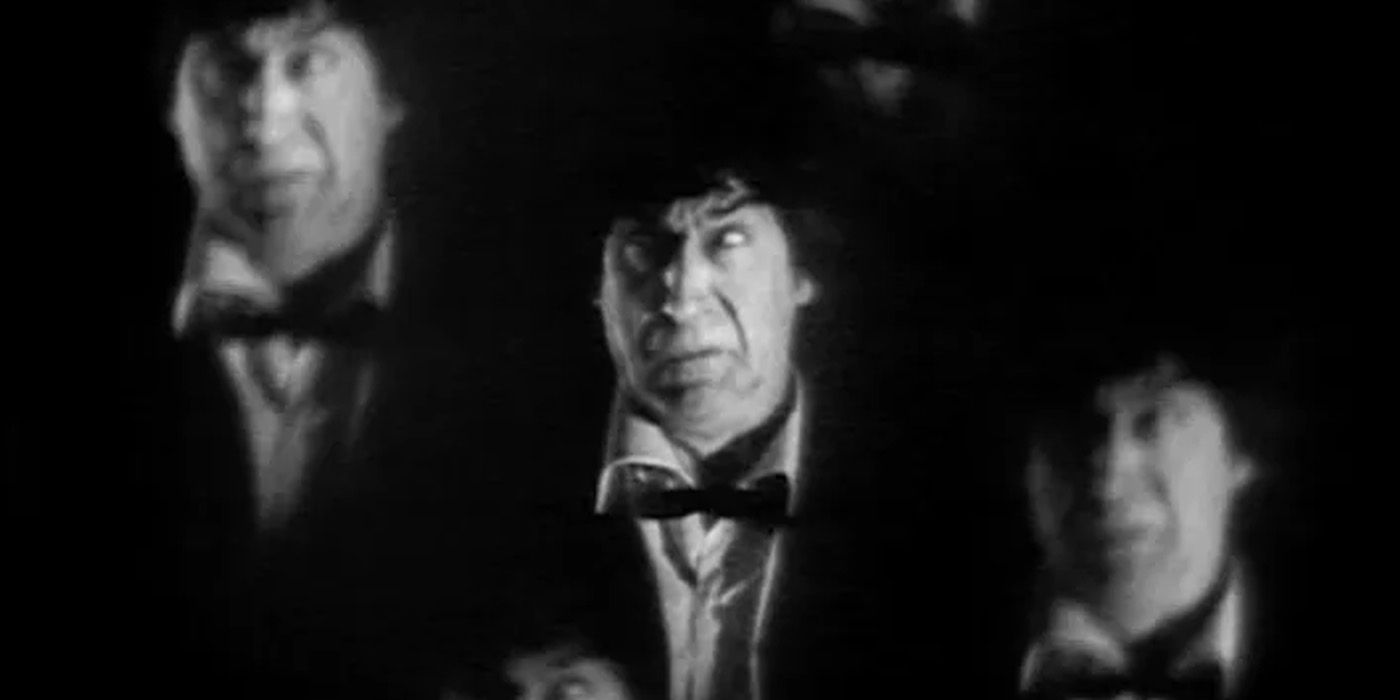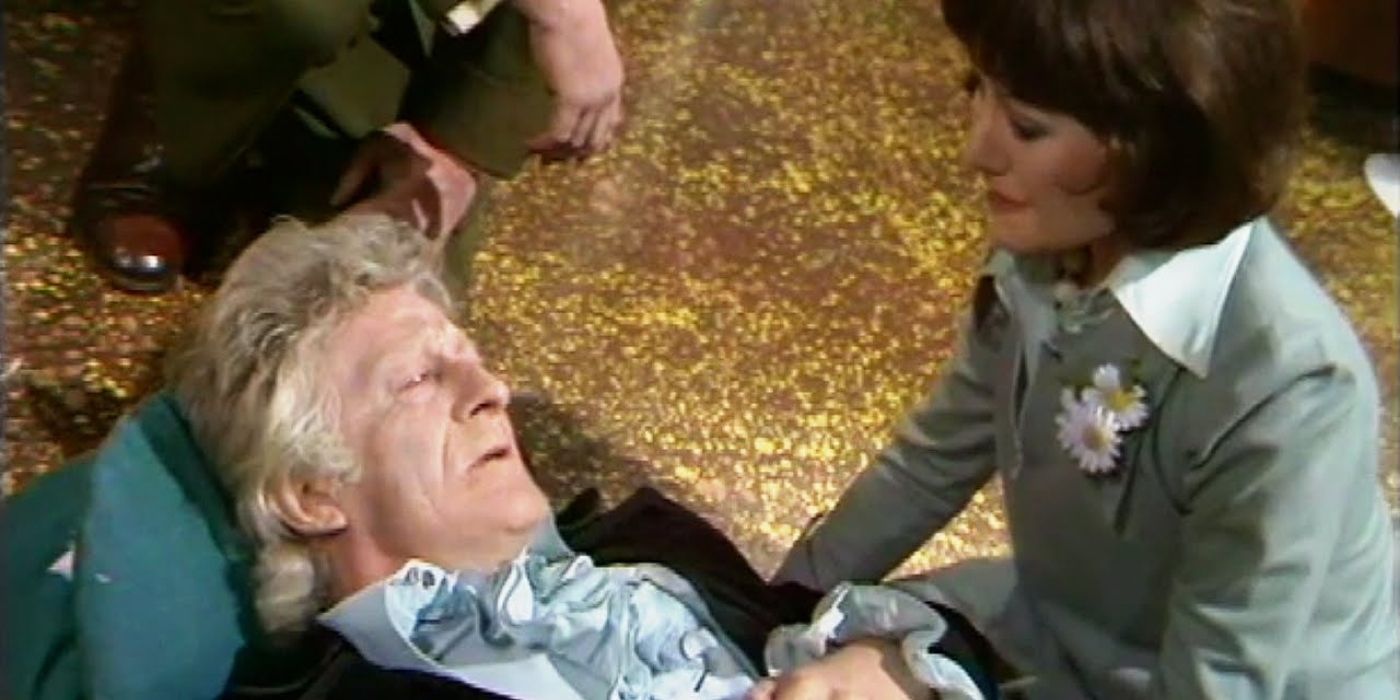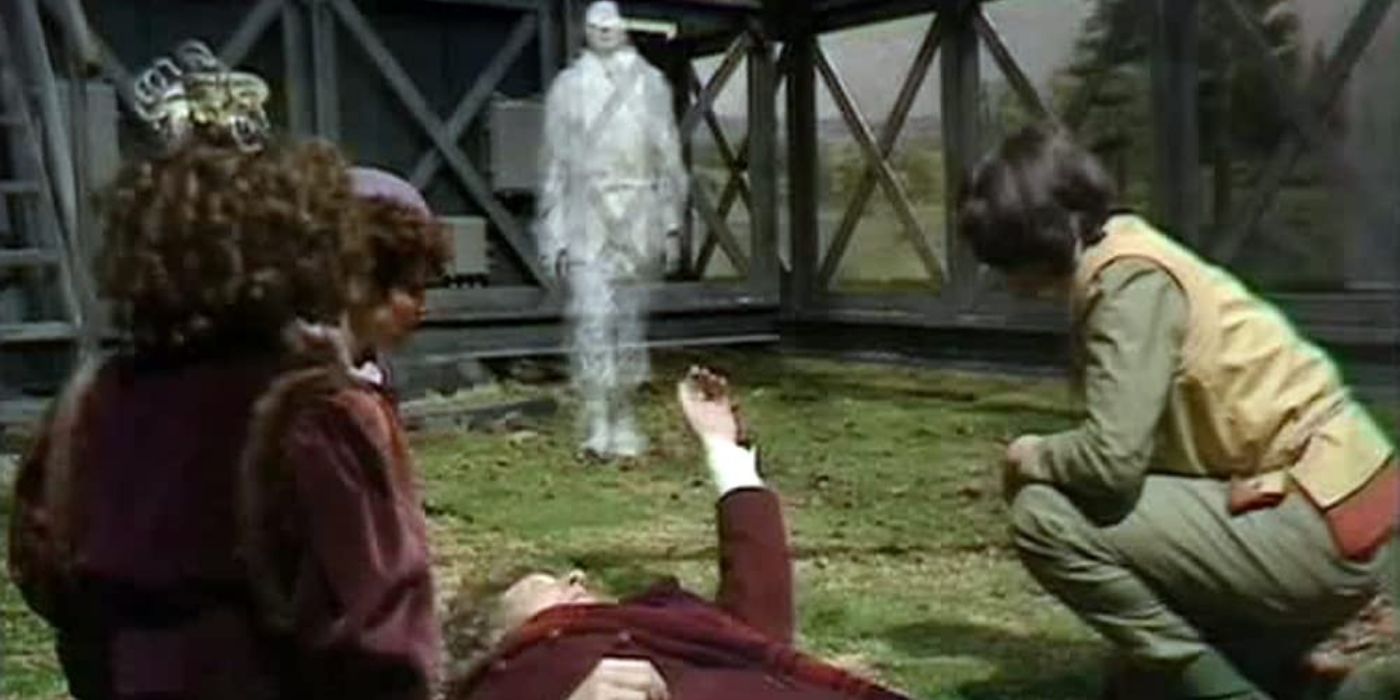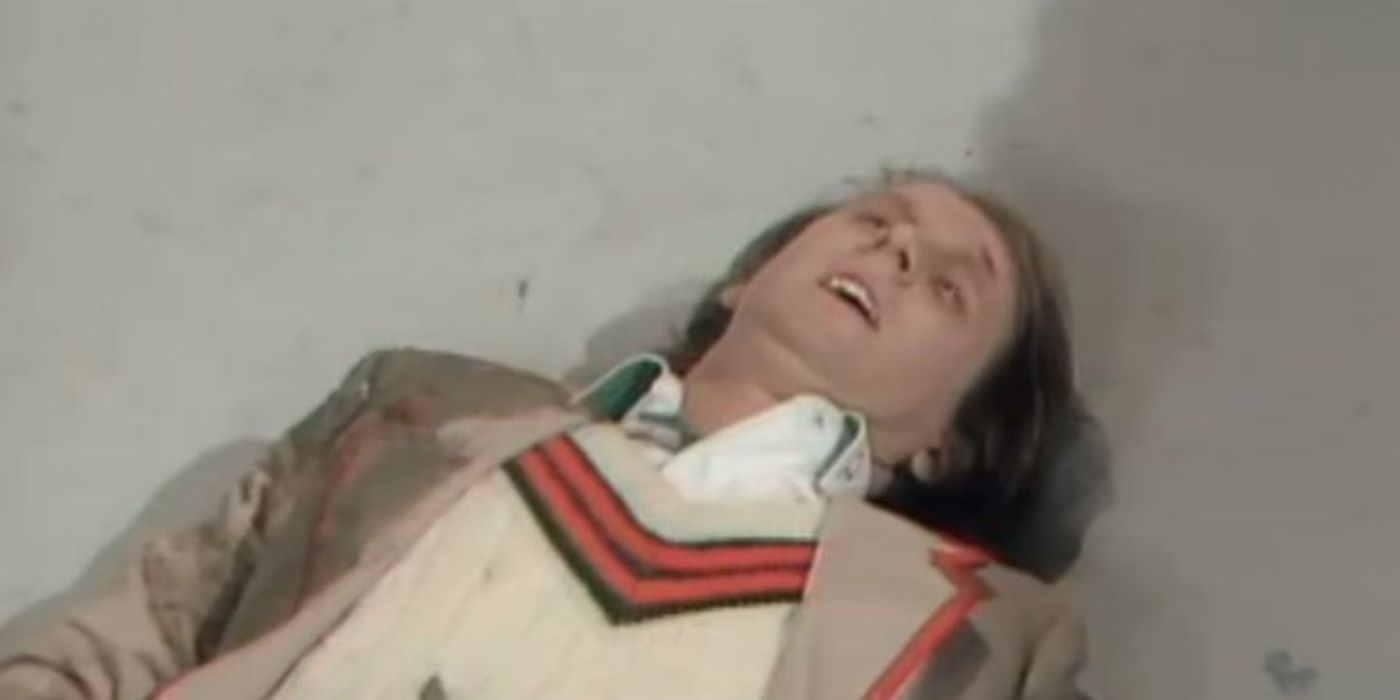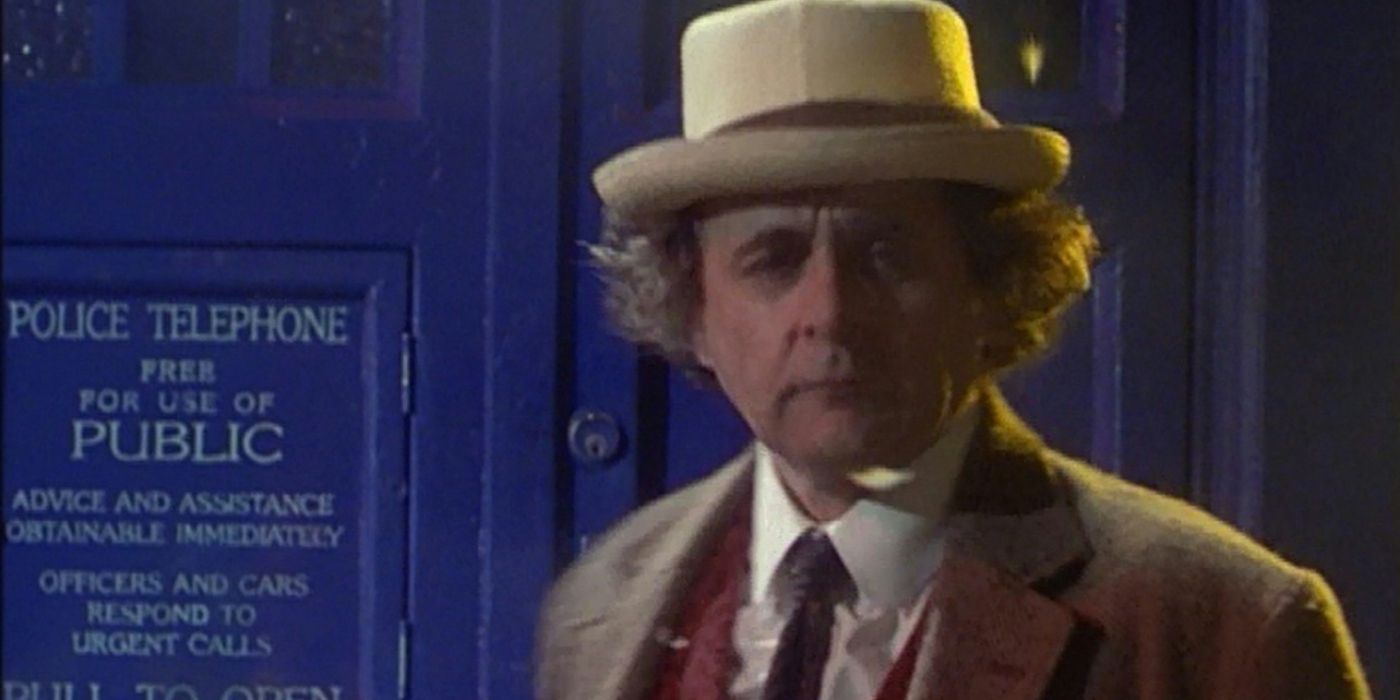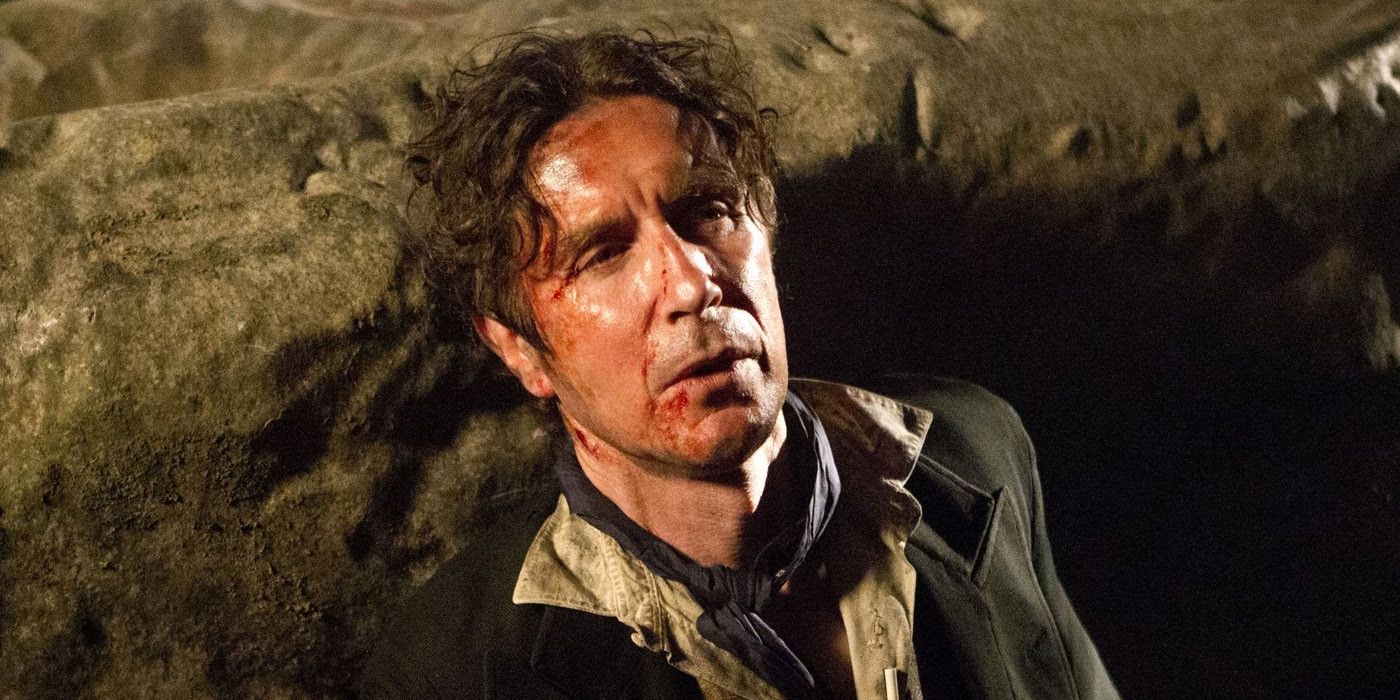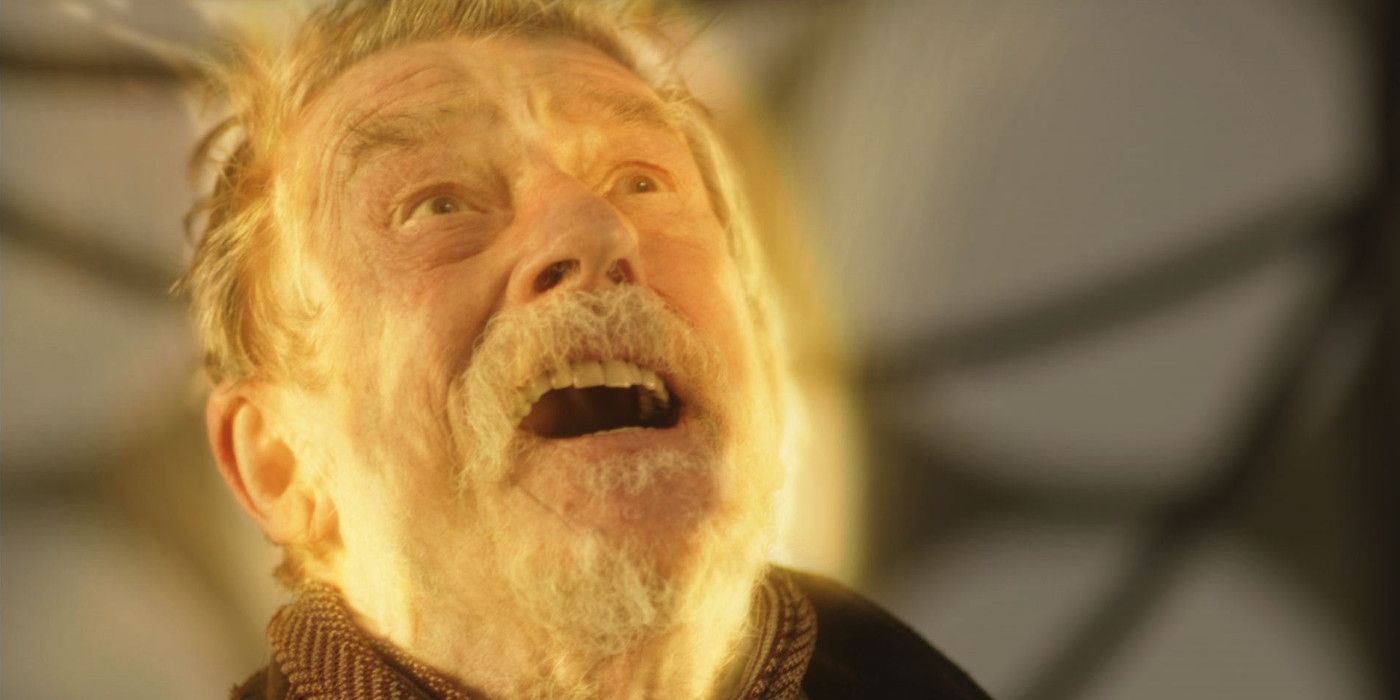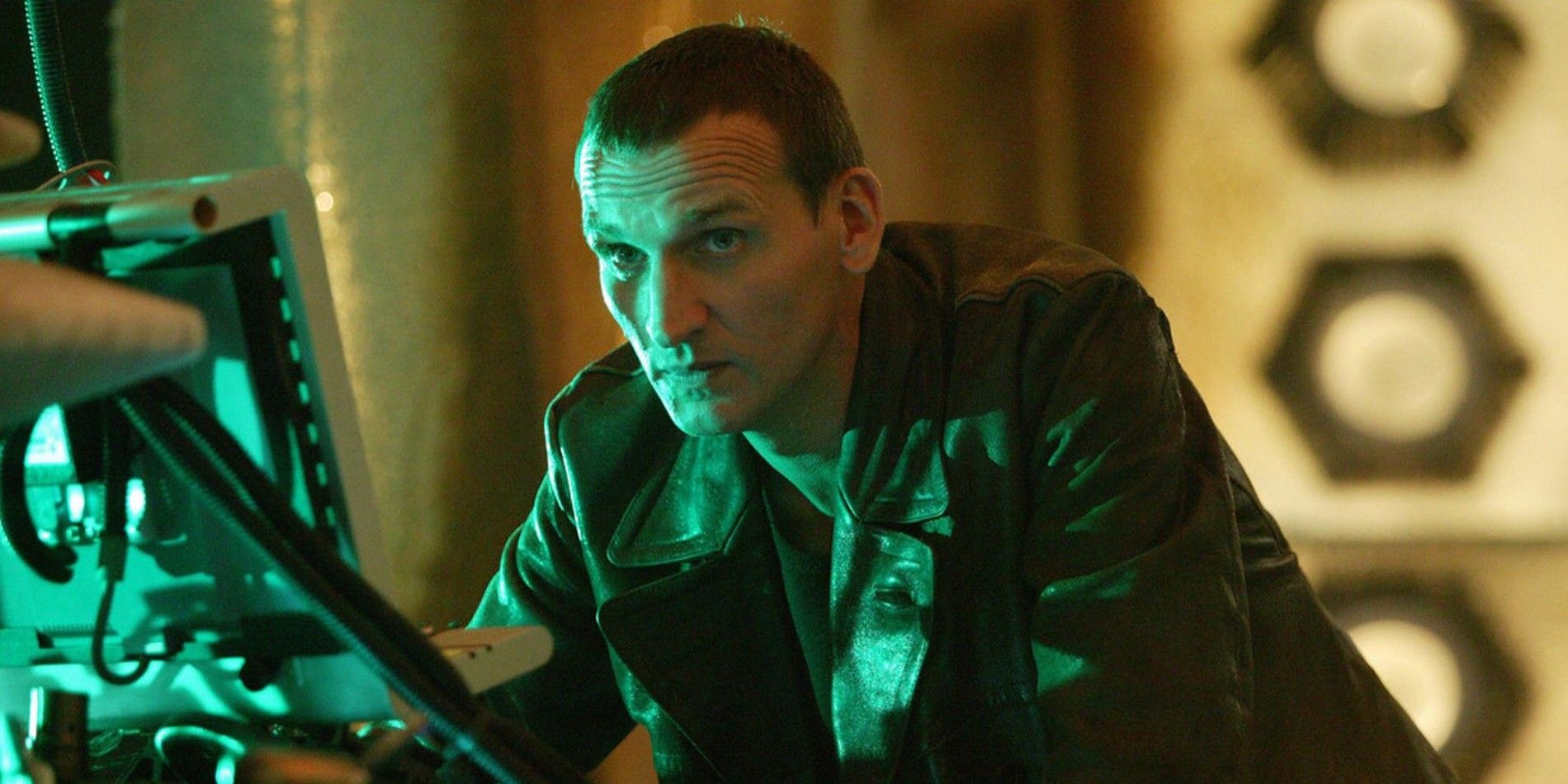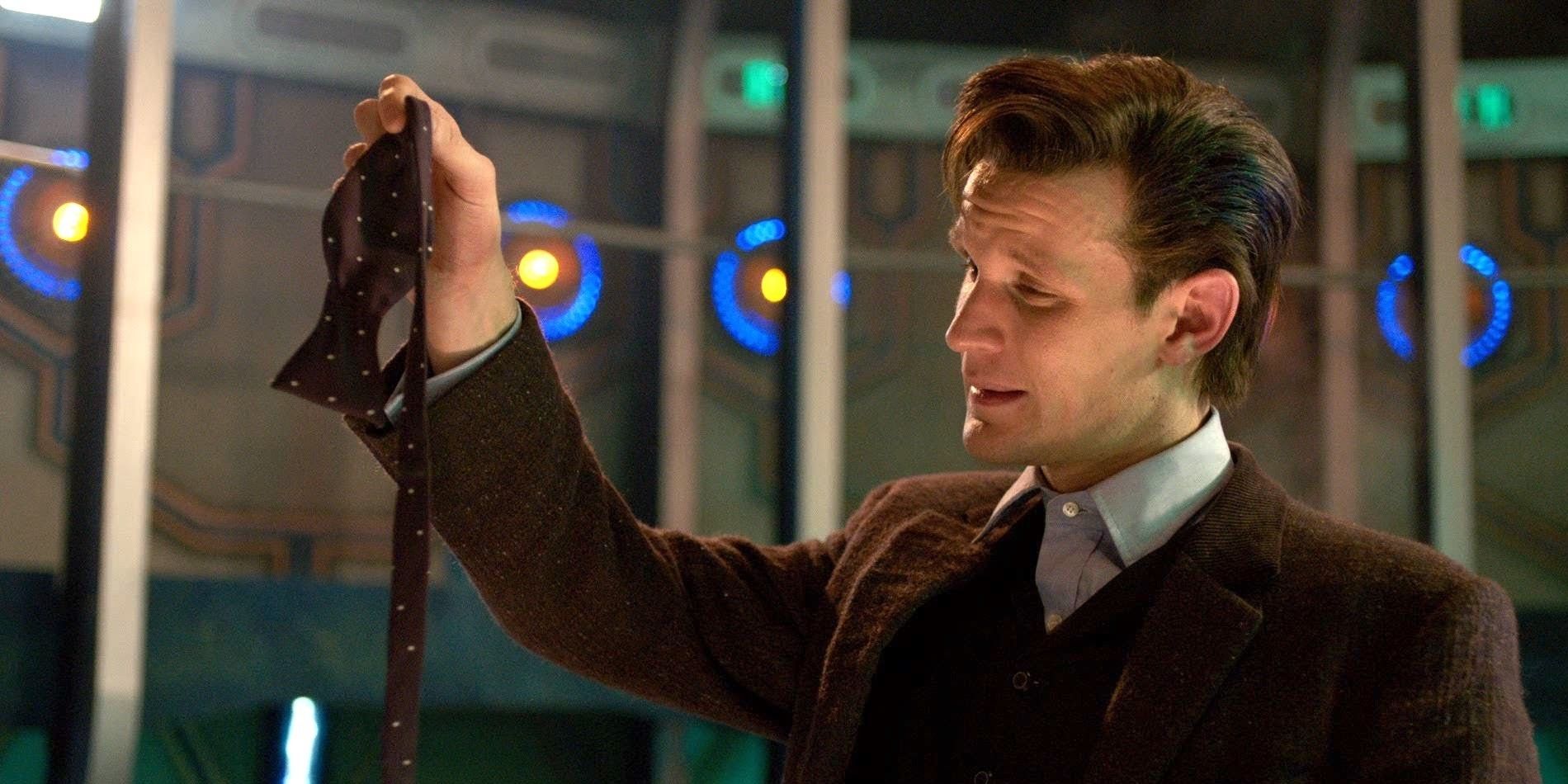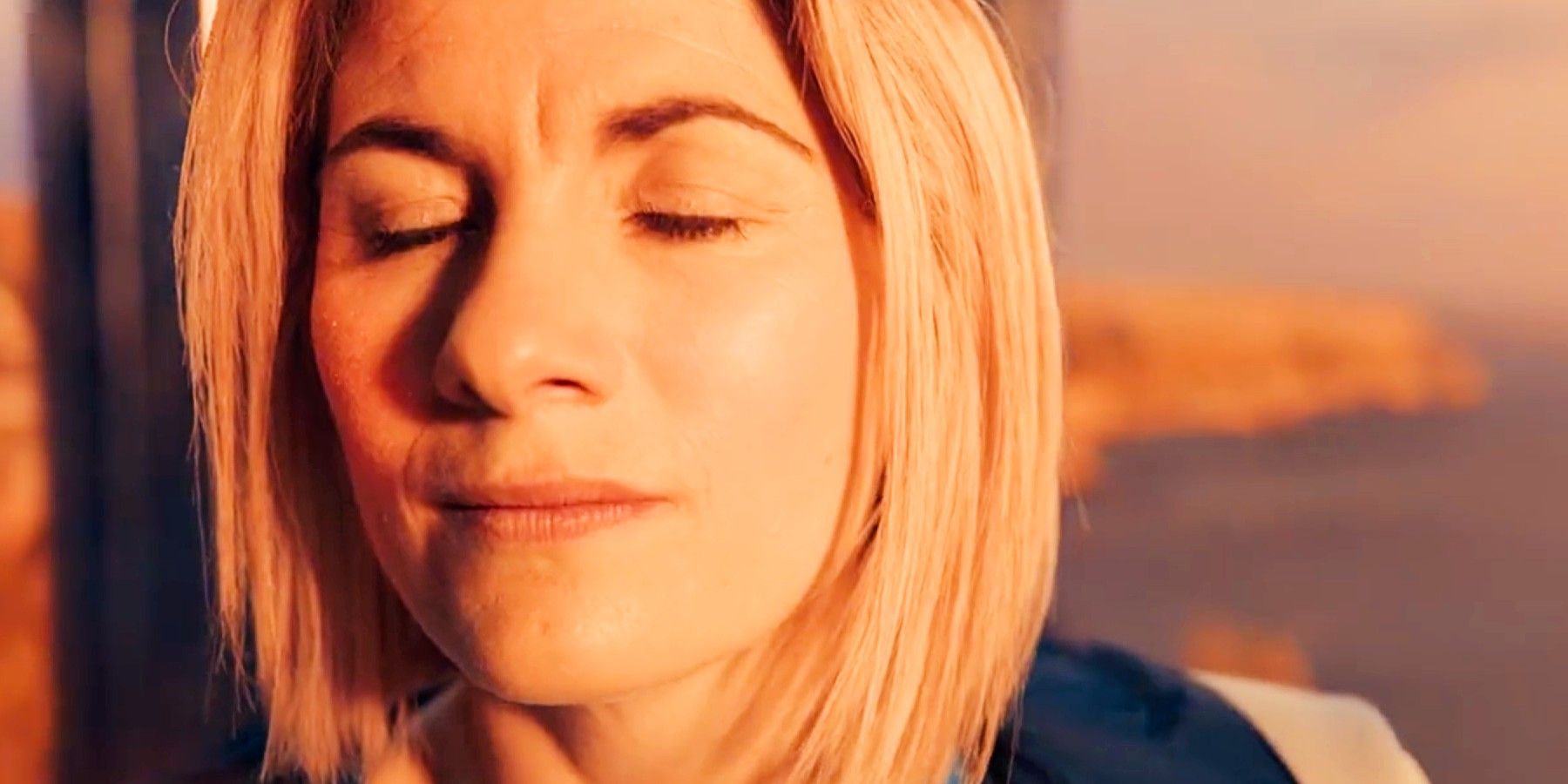Summary
- Doctor Who's ability to regenerate allows the show to continue when the leading star quits, bringing in new actors to play the Doctor.
- The regenerations in Doctor Who have been caused by a wide range of threats and problems, making each one unique and often dramatic.
- Some of the reasons behind the Doctor's regenerations include old age, punishment from the Time Lords, radiation poisoning, and fatal injuries from various enemies.
Many different enemies, injuries, and mishaps have caused the Doctor to regenerate in Doctor Who. Recasting a title character is risky business for most TV and movie franchises, but for Doctor Who, it's an integral part of the mythology. In a unique trick, Time Lords have the ability to cheat death, renewing every cell in their bodies when they are gravely sick or fatally wounded. From a real-world point of view, regeneration provides Doctor Who with a legitimate way of continuing the show when the leading star quits, allowing many different actors to play the Doctor.
Regeneration is one of Doctor Who's most innovative and useful concepts, but the process has been wildly different on almost every occasion. From the First Doctor's sedate transition into a younger man to the wild bi-generation split between David Tennant and Ncuti Gatwa, the Doctor's regenerations have been caused by a wide variety of different threats and problems over the past 60 years of Doctor Who. Some of these regeneration triggers have proven considerably more dramatic than others.
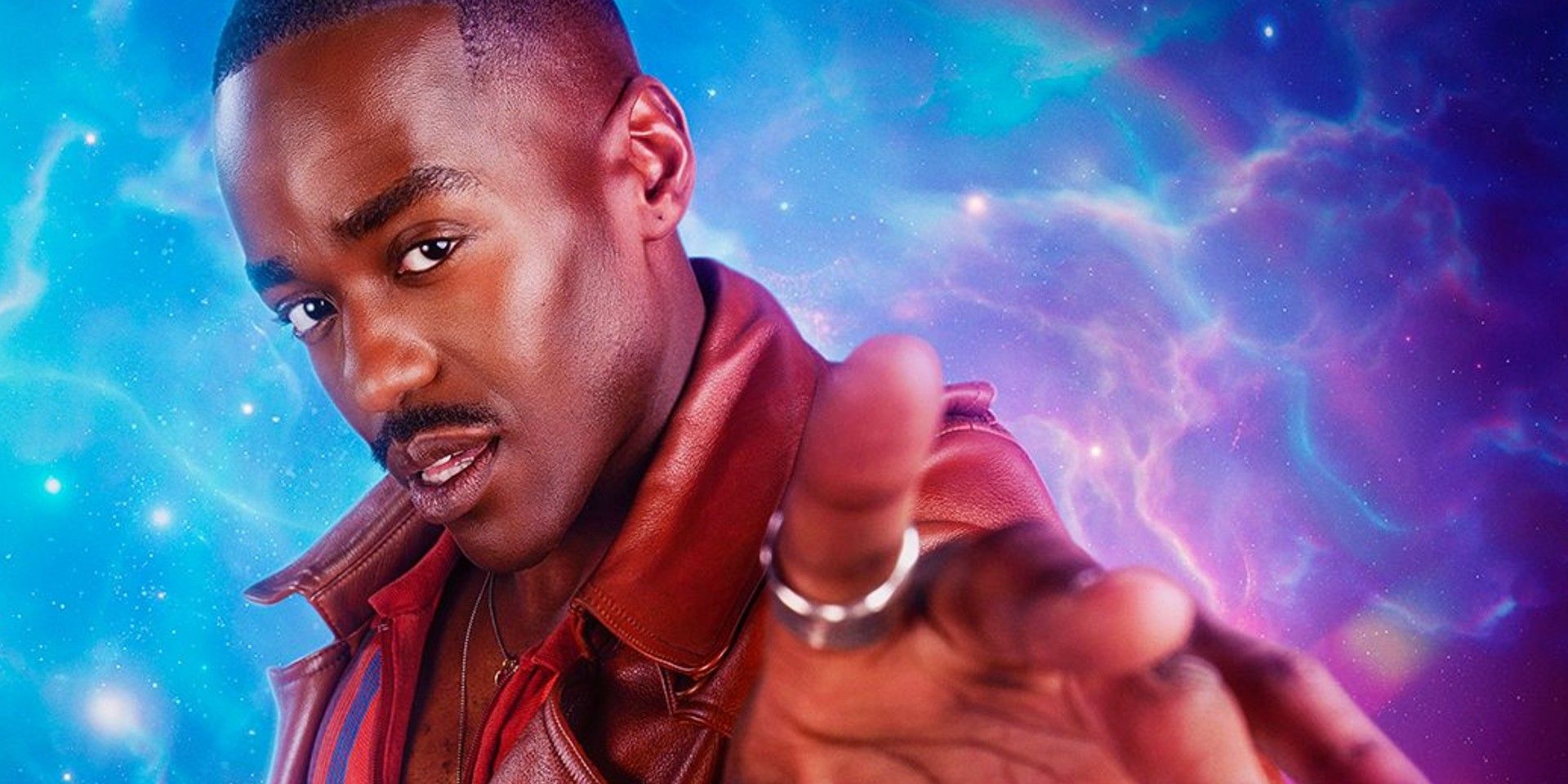
Doctor Who Season 14: Release Date, Cast, Trailer & Everything We Know
Doctor Who season 14 is arriving after the 60th anniversary special, and with it Ncuti Gatwa's new Doctor. Here's everything we know so far.First Doctor - Old Age
Regenerated in "The Tenth Planet" - October 29, 1966
Doctor Who's original creative team cooked up the idea of regeneration after William Hartnell, the very first actor to bring the Doctor to life, began to struggle with memorizing scripts and delivering lines. Seeking to continue the show with a younger star, the Doctor would "renew" himself and transform into a completely different man. Throughout the First Doctor's final adventure, "The Tenth Planet," the Time Lord appeared weakened and frail, sometimes being forced to rest as he battled the dastardly Cybermen for the first time.
After helping to save Earth from the emergence of the Cybermen's home planet, the Doctor wearily returned to his TARDIS and collapsed, regenerating into his Second form, as portrayed by Patrick Troughton. Although not explicitly stated, the most widely accepted reason for the First Doctor's regeneration is old age. The First Doctor was already several hundred years old before the start of Doctor Who, and his adventures since "The Unearthly Child" had evidently taken their toll on his ailing body.
Second Doctor - Punishment
Regenerated in "The War Games" - June 21, 1969
When it came time for Patrick Troughton to move on from Doctor Who, the "old age" excuse wasn't going to fly for a second time, with the Second Doctor not only younger and more cheerful than his predecessor, but also far more sprightly. Instead, Doctor Who introduced a different element to the show's wider mythology that would form a core part of the franchise for decades to come: the Time Lords. Although always clearly of alien origin, the Doctor's background had never been previously addressed, but "The War Games" finally revealed his heritage and established the Time Lord code of non-interference.
The Doctor was wildly in violation of said code, and had been running from his fellow Time Lords since Doctor Who started, but a dire situation forced Troughton's Doctor to seek aid from his Gallifreyan kin regardless, knowing a harsh punishment inevitably awaited. Charged with various counts of fiddling history, the Doctor was forced to give up his current regeneration and found himself exiled on Earth. As a bonus punishment, the Second Doctor's companions completely forgot about their adventures in the TARDIS, until Jamie and Zoe's memories were restored by 2023's Tales of the TARDIS spinoff.
Third Doctor - Spider Radiation
Regenerated in "Planet Of The Spiders" - June 8, 1974
Jon Pertwee's Third Doctor was the most human version yet, driving a jaunty car, joining Doctor Who's UNIT organization as a scientific advisor, and taking down baddies with his Venusian aikido. However, the Third Doctor's eventual regeneration was definitively alien in nature. Having previously stolen a blue crystal from the planet Metebelis 3, the Doctor discovered that a race of giant mutated spiders had taken over and were seeking the crystal's prompt return. While this sounds like a reasonable request, the spiders were plotting to use the crystal as part of a larger plan to dominate the galaxy.
Always a step ahead, the Doctor knew the crystal's overwhelming power would kill, not enhance, the spiders' leader, and that handing back the stolen crystal would ultimately save the day. Problematically, the spider's cave was teeming with lethal radiation. In a noble effort to protect the universe, the Doctor ventured into the cave of the Eight Legs and handed over the crystal, defeating the spiders, but also absorbing enough radiation to kill his third incarnation completely. Upon exiting, Pertwee's Doctor barely had enough strength to pilot the TARDIS back to Earth and regenerate.
Fourth Doctor - Falling From A Tower
Regenerated in "Logopolis" - March 21, 1981
Tom Baker's regeneration into Peter Davison was unique in that it required the cooperation of a mysterious third party. In "Logopolis," the fabric of reality was beginning to unravel, forcing the Doctor to team up with the Master to save the universe. Although the unlikely duo succeeded, the always-opportunistic Master threatened to restart the collapse unless the universe pledged its unwavering subservience. Ascending a high radio tower, the Doctor managed to disconnect the large dish broadcasting the Master's ultimatum. Thanks to the Master tilting the tower's gantry, however, the Doctor plummeted to the ground below, triggering his next regeneration.
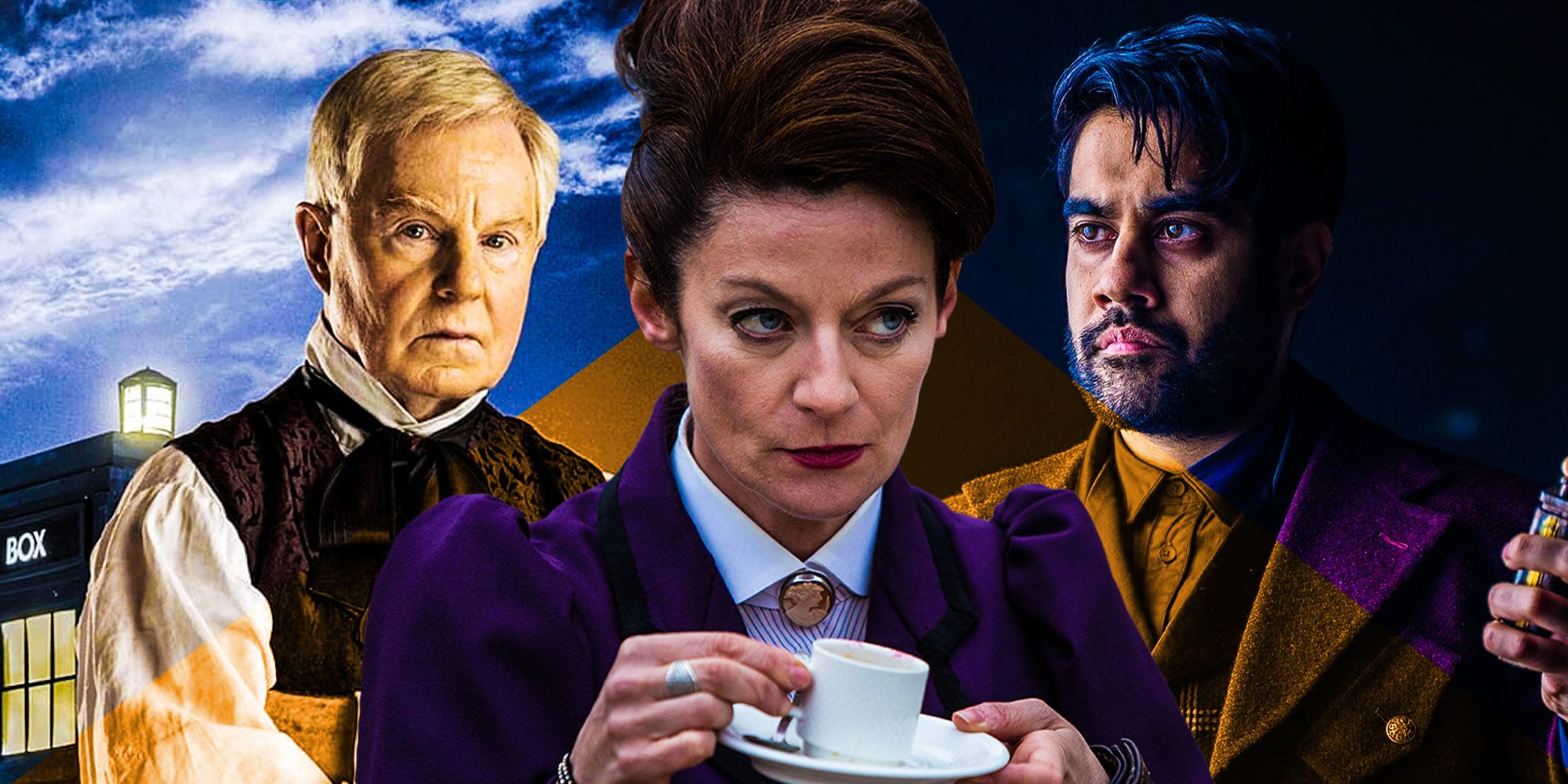
Doctor Who: Every Actor Who Has Played The Master
The Master is one of the greatest foes The Doctor has ever faced. Here's every actor to play the iconic Doctor Who villain within the main continuity.Having been followed by a strange white figure known as "the Watcher" for the entire story, the dying Fourth Doctor revealed this ethereal stalker to be his own future incarnation, and the two Time Lords merged to begin the Fourth Doctor's regeneration process. Exacrtly why the Watcher played a role in this particular regeneration remains unclear. Wider Doctor Who media, specifically Gary Russell's 1999 novel Divided Loyalties, suggests that seeing a Watcher is an occasional phenomenon that befalls Time Lords nearing their end.
Fifth Doctor - Poisoning
Regenerated in "The Caves of Androzani" - March 16, 1984
In his final story, Peter Davison's Fifth Doctor stumbled across a battle between various political and military factions over a valuable natural resource called Spectrox on the planet Androzani. While inspecting the Caves of Androzani, the Doctor's then-assistant, Peri Brown, became entangled in an unknown sticky substance later revealed to be unrefined Spectrox. Both Peri and the Doctor made skin contact with this deadly material, and soon begin to exhibit symptoms of poisoning. The Fifth Doctor embarked on a mission deep into the caves to find the only known antidote to their condition, and although he succeeded, he could only retrieve a single dose, preventing Peri's Doctor Who death at his own expense.
Sixth Doctor - The Rani
Regenerated in "Time & The Rani" - September 7, 1987
Colin Baker's departure from Doctor Who was an acrimonious one, and this resulted in the most abrupt regeneration in Doctor Who history. At the very beginning of Doctor Who season 24 premiere "Time And The Rani," the TARDIS came under attack from the planet Lakertya at the Rani's command. After a barrage of energy blasts, the TARDIS was caught and boarded, at which point the Rani witnessed the Sixth Doctor regenerate. The exact cause of Colin Baker's renewal has never been made clear, leaving viewers to assume he sustained severe injuries following the assault on the TARDIS. Various novels and audio books have sought to fill in the gaps of the Sixth Doctor's demise.
Seventh Doctor - Human Surgery
Regenerated in the 1996 Doctor Who TV movie
The classic series of Doctor Who was canceled while Sylvester McCoy's Seventh Doctor held the keys to the TARDIS, but his story continued in the 1996 TV movie, which offered a regeneration sequence grounded in stark realism. Thanks to the Master, the Doctor's TARDIS unintentionally materialized in 1999 San Francisco, right in the center of a shootout between rival gangs. The Doctor's sudden appearance spared the life of a young man named Chang Lee, but the Time Lord himself took a barrage of bullets.
With his dual hearts and Gallifreyan physiology, the Doctor actually survived the shooting, but was subsequently killed by well-meaning surgeons as they attempted to save his life in an operating theater. By aimlessly fiddling in the Time Lord's body, Dr. Grace Holloway killed the recovering Doctor, and he later regenerated in the building's morgue. In a quirk of the TV movie's ill-advised attempts to modernize Doctor Who for an international 1990s audience, Sylvester McCoy's regeneration is the first and only sequence to feature sparks of lightning during the process.
Eighth Doctor - Ship Crash
Regenerated in the 2013 short "The Night of the Doctor"
With his most prominent appearance coming in the unpopular Doctor Who TV movie, fans spent several decades guessing how Paul McGann's Eighth Doctor regenerated. An answer finally arrived via the short film, "The Night of the Doctor" in time for Doctor Who's 50th anniversary. Written by Steven Moffat, "The Night of the Doctor" saw the Time Lord desperately trying to avoid getting involved in the burgeoning Time War spreading across the universe.
Traveling alone, the Doctor came across Cass, the pilot of a doomed ship, and attempted to save her life. Unusually for Doctor Who, Cass declined, not wanting to be saved by a member of the race known for destroying galaxies with its endless war against the Daleks. The Doctor refused to leave, and with both passengers remaining stubborn until the end, the ship crashed, killing both instantly. Fortunately, the Doctor landed on Karn, a former colony of Gallifrey introduced in the Fourth Doctor's era. The planet's natives, known as the Sisterhood, provided the Eighth Doctor with an elixir that purported to imbue his next regeneration with the characteristics required for battle.
War Doctor - Old Age
Regenerated in "The Day of the Doctor" - November 23, 2013
Appearing in the Doctor Who 50th anniversary special, John Hurt's War Doctor was a fleeting but welcome addition to Doctor Who canon, and regenerated in the final moments of "The Day of the Doctor." Making reference to his body "wearing a bit thin," the War Doctor's regeneration could, for the first time since 1966, be attributed to old age. It can be argued, however, that the War Doctor's function was merely to serve as a soldier in the Time War, and once that conflict was over, the War Doctor had fulfilled his purpose.
Ninth Doctor - Absorbing TARDIS Energy
Regenerated in "The Parting of the Ways" - June 18, 2005
For the second time, the Doctor sacrificed himself to save a companion. Under assault from the Daleks, the Ninth Doctor sent his then-companion, Billie Piper's Rose Tyler, away in the TARDIS for her own safety. Rose refused to accept being unable to help the Doctor and fought to find her way back to him, eventually absorbing the heart of the TARDIS and gaining the godlike abilities of Bad Wolf in the process.
Rose saved the day, but the massive energy would have killed her before long, forcing the Ninth Doctor to absorb the power himself via a painfully cheesy kiss. After putting the TARDIS energy back in place, the Doctor started feeling the effects of saving Rose, claiming that no Time Lord is ever supposed to take in that much power. He promptly regenerated into David Tennant.
Tenth Doctor - Radiation
Regenerated in "The End of Time, Part 2" - January 1, 2010
David Tennant's regeneration as the Tenth Doctor was a long time coming in Doctor Who, with the "he will knock four times" warning coming well in advance of Ten's final episode. Viewers were deliberately misled into believing this prophecy would be fulfilled by the Master or Rassilon. In the end, however, it was Bernard Cribbins' Wilf that heralded the end of David Tennant's first reign in the TARDIS.
During the dramatic final confrontation of "The End of Time," Wilf selflessly freed an innocent worker from a two-man radioactive chamber, locking himself in until another person could take his place. When the dust settled, the Doctor heard Wilf gently knocking on the glass and realized the only way to save Wilf was sacrificing himself, absorbing a deadly dose of radiation in the old man's stead. After a whirlwind tour of his old friends, the Tenth Doctor delivered an emotionally devastating final line of "I don't want to go" and regenerated in explosive fashion. Poison 3 - the Doctor 0.
Eleventh Doctor - Old Age/A New Regeneration Cycle
Regenerated in "The Time of the Doctor" - December 25, 2013
For the third time in his life, the Doctor died of old age when their Eleventh incarnation resolved to protect the planet of Trenzalore, spending hundreds of years guarding a crack that separated the hidden planet Gallifrey from the amassing Dalek fleet waiting to resume the Time War. Since the Tenth Doctor had previously avoided regenerating through the use of his preserved severed hand, Smith's Doctor was out of lives, sitting right at the end of his allotted twelve-regeneration cycle.
After deterring Time War Two for the remaining years of his Eleventh iteration, the Doctor consigned himself to a death of the permanent kind, but was spared this grim fate by the Time Lords, who granted him a brand-new regeneration cycle in exchange for preventing war starting anew. Matt Smith's Doctor used said energy to defeat his enemies and temporarily revert to his younger self, but could not delay regeneration for long. The first incarnation of the Doctor's new cycle kicked in, and Matt Smith was soon replaced by an angry pair of eyebrows.
Twelfth Doctor - Cybermen
Regenerated in "Twice Upon A Time" - December 25, 2017
Peter Capaldi's regeneration was special in the sense that it was triggered by damage accumulated throughout the Twelfth Doctor's final adventure. Coming up against a powerful army of Cybermen and two versions of the Master, the Doctor's first major injury arrived in the form of Cyberman electrocution. Although the Doctor survived, he spent several weeks recovering from the attack and was unable to heal a cut on his forehead. The golden regeneration energy beginning to brew from his hands gave a sure sign that death was inevitable.
Delaying his forthcoming renewal, the Doctor later engaged multiple Cybermen in combat and endured several energy blasts before detonating an explosion that not only wiped out his mechanical enemies, but puts paid to any chance the Doctor might've had of recovering from his previous wounds. Capaldi's regeneration marked a rare occasion in Doctor Who history where a major villain actually succeeded in killing the Doctor.
Thirteenth Doctor - Qurunx Beam
Regenerated in "The Power of the Doctor" - October 23, 2022
Not to be outdone by the Rani and the Cybermen, the Master became the first recurring Doctor Who villain to kill two different Doctors in the ending of 2022's "The Power of the Doctor." As part of a ridiculously convoluted plot involving Daleks, Cybermen, and Boney M, the Master had captured a ball of sentient energy called the Qurunx to power a cyber-conversion planet that would turn the Master himself into the Doctor. This victory was short-lived, and after Jodie Whittaker's Thirteenth Doctor saved the day - with a little help from old friends - she set about cleaning up the Master's mess by releasing the Qurunx and asking it to destroy the cyber machine it was fueling.
Feeling vengeful after yet another defeat, the Master dragged himself onto the scene and used his sonic device to push the Qurunx's beam into the path of the Thirteenth Doctor, killing her and triggering the regeneration process. After a brief goodbye and one last trip in the TARDIS, Whittaker tagged in her successor/predecessor, David Tennant. Similar to when the Master caused the Fourth Doctor to regenerate, Thirteen lost her life because of indirect interference from her eternal rival after mistakenly believing the danger has passed.
Fourteenth Doctor - The Toymaker
Regenerated in "The Giggle" - December 9, 2023
The First Doctor was lucky to escape the Toymaker unscathed during their initial encounter, but Fourteen proved less fortunate after the villain arrived on Earth for a rematch in 60th anniversary special "The Giggle." Portrayed by Neil Patrick Harris, Doctor Who's omnipotent Toymaker commandeered UNIT's galvanic beam and proceeded to wreak havoc. Having lost to the First Doctor and beaten the Fourteenth at a card game, the Toymaker declared his intention to face a different Doctor for their third bout, and fired the laser cannon directly through David Tennant's chest.
The transition from Tennant's Fourteenth Doctor to Ncuti Gatwa's Fifteenth Doctor was strikingly unique, with showrunner Russell T Davies introducing the concept of bi-regeneration especially for the occasion. Although the specifics of this phenomenon remain deliberately murky, the Fifteenth Doctor emerged from the previous model, while Fourteen is allowed to live on, with all wounds caused by the galvanic beam completely healed. Precisely how bi-generation will impact future Doctor Who regenerations remains to be seen, but the gimmick will inevitably raise questions over how and why Gatwa's Fifteenth Doctor could ultimately regenerate himself.
Doctor Who
- Release Date
- November 23, 1963
- Writers
- Mark Gatiss , Toby Whithouse , Neil Cross , Steven Moffat , Chris Chibnall

